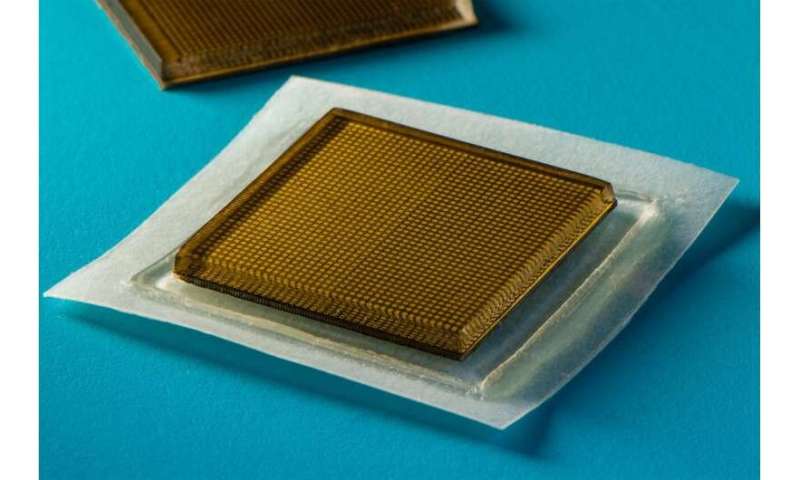Best of Last Week—Overshoot Day, ultrasound stickers see inside the body, viruses may trigger Alzheimer's disease

It was a good week for planetary science as a team at the University of Rochester wondering how Earth avoided a Mars-like fate found that ancient rocks suggest it had to do with the timing of the formation of Earth's inner core. Miners working in Angola unearthed a rare pink diamond that is believed to be the largest found in more than 300 years. And mankind marked a dubious milestone, dubbed "Overshoot Day"—when humanity has consumed everything Earth can sustainably produce in one year, this time in just seven months.
In technology news, a combined team from the University of Siena, IIT, Great Cell, BeDimensional S.p.A., the Hellenic Mediterranean University in Crete and the University of Rome Tor Vergata demonstrated a standalone solar farm in Crete that integrates graphene perovskite solar panels. Also, a team with members from Shanghai Jiao Tong University and East China Normal University developed a molecular implementation of a DNA-based artificial neural network—their approach demonstrated ways to overcome problems associated with traditional artificial neural network designs. And a team at MIT developed stickers that could be used to see inside the body. The stamp-sized stickers adhere to the skin and rely on ultrasound imaging to provide continuous imagery for up to 48 hours. Also, a team with members from CoorsTek Membrane Sciences, SINTEF Industry and Universitat Politècnica de València, developed and demonstrated a ceramic membrane-based reactor capable of producing hydrogen while simultaneously capturing carbon.
In other news, a team with members affiliated with several institutions in the U.K. found that athird COVID-19 booster shot is crucial to identifying and battling new variants of the disease. A combined team from the Florida Museum of Natural History and the Georgia Museum of Natural History found the oldest DNA evidence from a domesticated horse in the Americas, leading credence to theories that suggest horses in the Americas arrived via the wreck of a Spanish galleon. And finally, a combined team from the University of Oxford and Tufts University found evidence that common viruses may trigger the onset of Alzheimer's disease.
© 2022 Science X Network